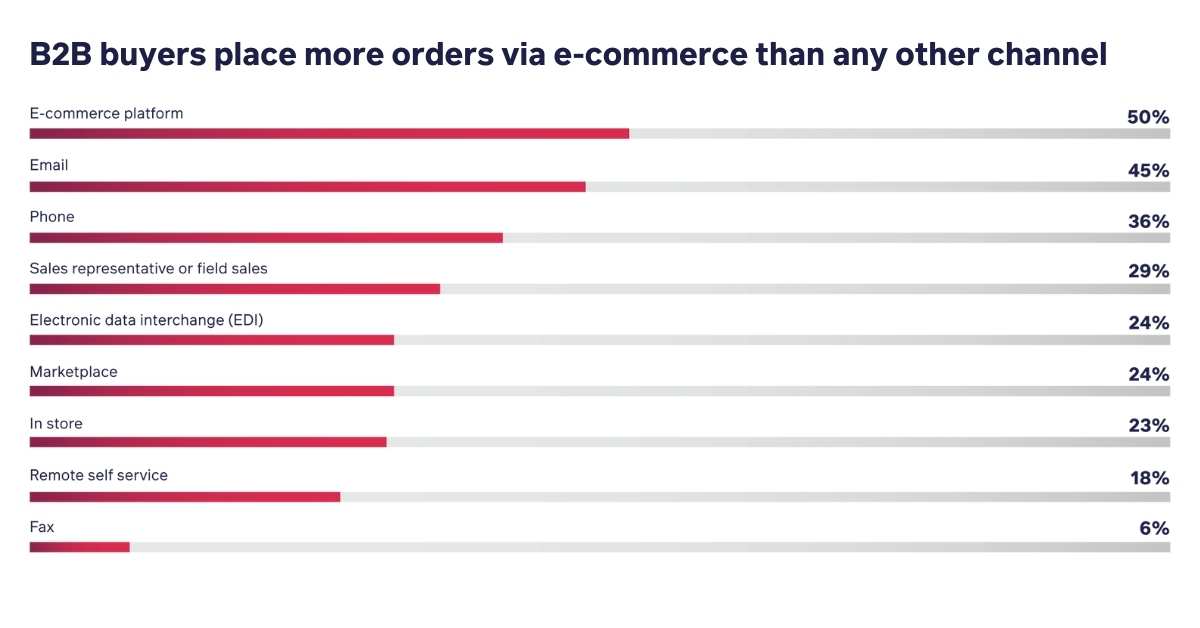Definition of order management system:
An order management system is a software that enables customer order entry and processing.

An order management system is a software that enables customer order entry and processing.
Order management is the order-to-cash sales process that sits at the heart of any goods-based B2C and B2B company. Put simply, it’s the end-to-end cycle of receiving and processing a customer order through to fulfillment.
Order management is not conducted in isolation; it relies on almost every department in a company: from a customer service team to the warehouse staff, the accounting department through to delivery partners.
When mastered effectively, order management ensures a business’s workflow runs smoothly by establishing efficient processes to keep it moving forward; maintaining customer satisfaction and protecting a company’s reputation.
Order management involves a series of interconnected touchpoints and stakeholders who work collaboratively together to enable customers to order the right products, for the right price, and receive them at the right time. The order fulfillment system (as it is also known) not only secures that order-to-cash (O2C) processes run smoothly, but also gives businesses the opportunity to build customer profiles and keep track of inventory volume and sales records.
The key to order management involves a series of synced steps, fluid processes and constant communication to create a fluid order-to-cash flow. The smoother and faster the flow, the more orders the company is able to process, and the quicker the business is able to grow.
The process begins when a customer places an order; either online, in-store, or over the phone with a customer services representative. The customer’s details are then stored, including order history, the volume of orders, and payment preferences. Lastly, the customer order is sent to the warehouse.
The inventory is then checked by a warehouse manager and continuous supply from vendors is recorded. If inventory runs low, or runs out completely due to a large order, then an order will be placed to the purchasing department.
The order is then sent to the accounts department, where it is recorded as either cash sales or accounts receivable. The sale is logged in the ledger, an invoice is generated and sent to the client, and the payment is recorded.
A third-party shipping service (or a company’s own LTL) will then deliver the goods to the consumer and the order is fulfilled.
The more touchpoints and stakeholders involved in the order management process, the more obstacles there are to its success. Some of the key challenges for businesses include human error and process backlogs, inventory visibility, transportation errors, and poor communication, which can all seriously negate customer satisfaction and ultimately negatively impact loyalty.
In order to establish a fast-moving, cost-effective, and accurate order management cycle, both B2C and B2B companies are choosing to use an integrated and responsive order management system (OMS). The OMS integrates directly with a business’s ERP and is set up to work alongside the human workforce in order to obtain the most productive and profitable order management cycle possible.
An order management system has several key benefits for businesses including visibility at every step of the sales process, time efficiency, reduced risk of human error, and improved accuracy. Here are the top six benefits to an OMS:
An OMS operates on automation, and an automated order processing system saves costs on manual labor, decreases the risk of human error across invoicing and order data, and frees up time for companies to focus on growth and customer satisfaction. It also increases data security as there is less need for manual intervention.
Businesses can access their order management system online from any destination, which means they’re are able to process orders remotely and at any time. This results in greater data control, better customer service, and more efficient order processing.
The automation of the order-to-cash system quickly creates a standardized process from one single platform, freeing up company time to collect and analyze data in order to leverage business intelligence for further growth and tackle any issues.
The real-time capabilities of an order management system benefit inventory management, by distributing data in real-time regarding items sold, returned, or exchanged. This saves companies from over-selling inventory, and once again, ensures customer satisfaction.
The ease of a centralized order management system gives companies a single view of the complex e-commerce fulfillment ecosystem and protects against order errors, customer dissatisfaction, or lost revenue due to common glitches like low inventory, incorrect invoicing, or unforeseen transportation errors.
Thanks to the real-time data display of an OMS, companies are able to react faster to any issues that may arise, rather than risking customer dissatisfaction with errors or delays. It also ensures that product and payment data are up to date, giving companies more insight into their current state of the business.
High volume, high velocity, high expectation; the three key consequences of the rise of e-commerce and customer expectation in today’s “always on” society. The popularity of digital and e-commerce means that customers expect to order whatever they like, whenever they like and from a platform that suits them. In our B2B Buyer Report, we found that e-commerce is now the number one number one channel through which businesses purchase. 50% of business consumers now use an online portal to purchase — this is an increase of 22% from just two years prior.

The demand for e-commerce fulfillment has never been more prevalent. Customers expect a one-click process, and in order to encourage loyalty and repeat business, companies need to do as they demand.

Then get in contact with our e-commerce experts.